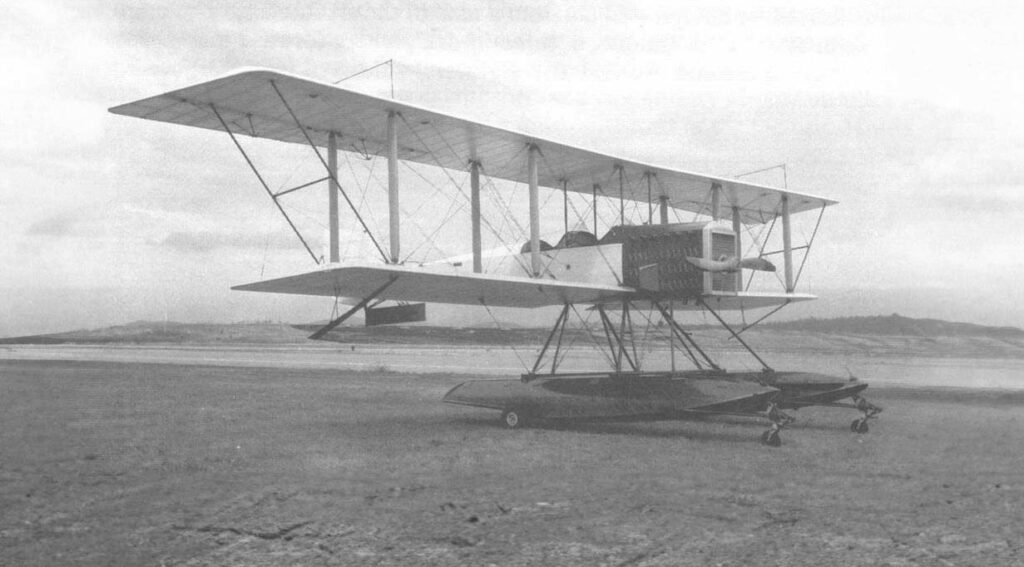The Boeing Model 1, also known as the B&W Seaplane, was a pioneering American biplane with a unique design and notable for its historical significance in Boeing’s lineage. This article delves into the Boeing Model 1, exploring its historical development, design, performance, and military use. It highlights the context of its creation, technical specifications, operational capabilities, and its role in the early days of aviation, underscoring its significance in Boeing’s history and early aviation.
The Boeing Model 1, famously known as the B&W Seaplane, marks a cornerstone in aviation history. As the first aircraft produced by Boeing, it symbolizes the inception of what would become one of the largest aerospace manufacturers in the world.

History of the Development of the Boeing Model 1
Historical Context:
The early 20th century witnessed a burgeoning interest in aviation technology. Amidst this era of rapid advancement, William Boeing, an American timber merchant, ventured into the realm of aircraft manufacturing.
Development Objective:
The impetus behind the Boeing Model 1 was to create a superior aircraft that could surpass the performance and reliability of existing models. It was intended to serve both military and civilian purposes, with an emphasis on training and reconnaissance roles.
Program Launch and First Flight:
Launched by Boeing Airplane Company, founded by William Boeing and George Conrad Westervelt, the development of the Model 1 commenced in 1915. The aircraft’s first successful flight occurred on June 15, 1916, marking a significant milestone in Boeing’s history.
Design of the Boeing Model 1
Technical Specifications:
- Dimensions: Wingspan of 52 feet (15.85 meters), a length of 27 feet 6 inches (8.38 meters).
- Structure: Constructed primarily from wood with a fabric covering, it featured a conventional biplane design.
- Weight: The aircraft had an empty weight of approximately 2,100 pounds (953 kilograms) and a maximum takeoff weight of around 2,800 pounds (1,270 kilograms). Advantages and Drawbacks:
One of the major advantages of the Model 1 was its versatility and reliability for the time. However, it lagged in terms of speed and advanced features compared to later designs. Design Contributions:
Its innovative design elements laid the groundwork for future Boeing aircraft, showcasing early principles of aerodynamics and aircraft design.
Performance of the Boeing Model 1
Engine and Power:
Powered by a Hall-Scott A-7A inline engine, the aircraft delivered around 125 horsepower (93 kilowatts).
Speed, Altitude, and Range:
- Maximum Speed: Approximately 75 mph (121 km/h).
- Service Ceiling: The aircraft could reach an altitude of about 6,500 feet (1,981 meters).
- Range: The estimated range was around 320 miles (515 kilometers). Comparative Analysis:
Compared to its contemporaries, such as the Curtiss JN-4 “Jenny”, the Model 1 was somewhat underpowered but excelled in its seaplane capabilities, offering flexibility in water-based operations.
Military Use and Combat of the Boeing Model 1
Armament:
The Boeing Model 1 was not typically armed, being primarily used for training and reconnaissance.
Military Use:
Although not extensively used in combat, the Model 1’s military significance lay in its demonstration of the potential of seaplanes for military applications.
Competing Aircrafts and International Sales:
Competing against models like the Curtiss JN-4, the Model 1 did not experience significant sales internationally, largely remaining a symbolic and foundational aircraft for Boeing.
Service Life:
The Boeing Model 1 was not used extensively post-World War I, with its service life being relatively short-lived as aviation technology rapidly evolved.
The Boeing Model 1, as the progenitor of the Boeing aircraft lineage, holds a significant place in aviation history. While its operational use was limited, its contributions to early aircraft design and Boeing’s subsequent dominance in the aviation industry cannot be understated. It epitomizes the innovation and ambition of early 20th-century aviation, laying the foundation for future advancements in aircraft technology.
Back to the Seaplanes section.